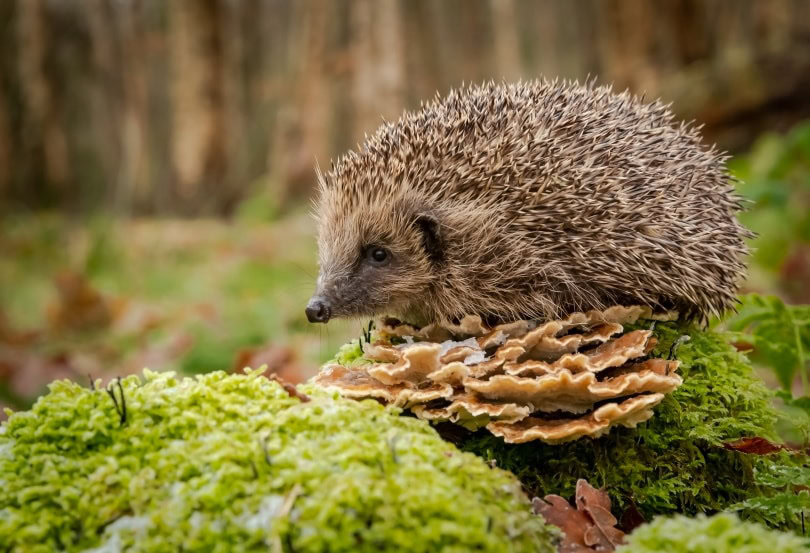VET APPROVED

The information is current and up-to-date in accordance with the latest veterinarian research.
Learn more »Click Below to Skip Ahead
With sharp quills, you wouldn’t think that a hedgehog would become one of the most popular pets. Still, their unique appearance and adorable faces only increase their demand. Hedgehogs have short, skinny legs and cone-shaped bodies. Their coats can be various shades of black, brown, and white, and despite their small size, they are fairly muscular animals.
Because they are so small, many wonder about their size as newborns and how big they get once they reach full maturity.

Facts About Hedgehogs
Even though more people are adopting hedgehogs these days, the general population still doesn’t know much about them. Some of these common hedgehog facts might surprise you.
To start, hedgehogs were named after their favorite activity. They root through hedges and undergrowth to find their favorite foods, such as insects, worms, snails, and frogs. Some species of hedgehogs have about 5,000 quills. Each quill lasts, on average, for one year before it falls out and gets replaced. The quills are also hollow and flexible and only become erect because of their muscles underneath.
Hedgehogs tend to be solitary animals in the wild. They only meet up with another hog when they are trying to mate. Litters can range between one and seven hoglets, with the average being between four and five. While there are 17 hedgehog species, not all of them are suited for life as a pet.
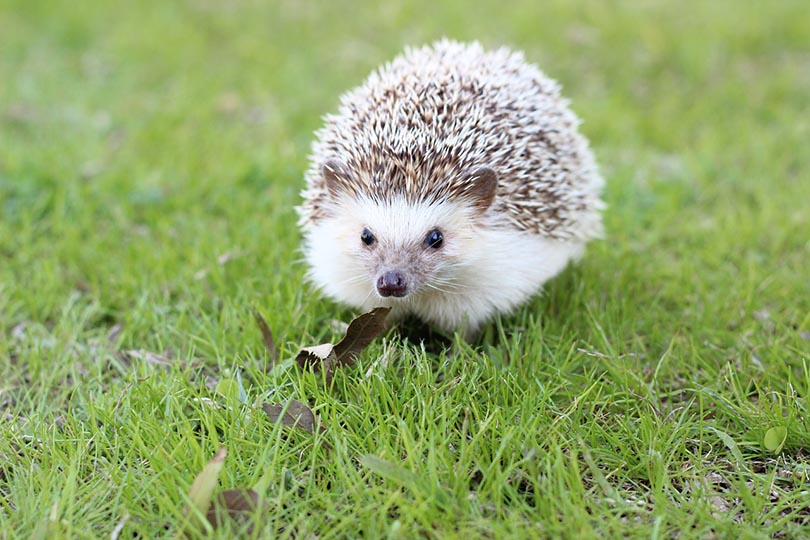

Hedgehog Size and Growth Chart
Only a few hedgehog species are suitable and legal to own as pets. This chart is based on the most popular kind, the African Pygmy Hedgehog (Atelerix albiventris), and uses approximate numbers that could change based on each individual hedgehog.
| Age | Weight Average | Length Average |
| Newborn | 0.35 ounces | 1.5 inches |
| 1 month | 1 ounce | 2-3 inches |
| 2 months | 2.5 ounces | 4 inches |
| 3 months | 3.5 ounces | 5 inches |
| 6 months | 6 ounces | 6-7 inches |
| 12 months | 9 ounces | 9-10 inches |
Please note that individual variances of weight can be quite extensive in hedgehogs. Certain individuals can tip the scale at 20 ounces once fully grown (around 600 grams).
When Does a Hedgehog Stop Growing?
The time it takes for a hedgehog to reach full physical maturity depends on various factors like diet, genetics, and species. Generally, most hedgehogs are able to reproduce when they are around 6 months old. However, they tend to physically grow until they are about 11 months old. Again, it depends on numerous factors in and out of our control.
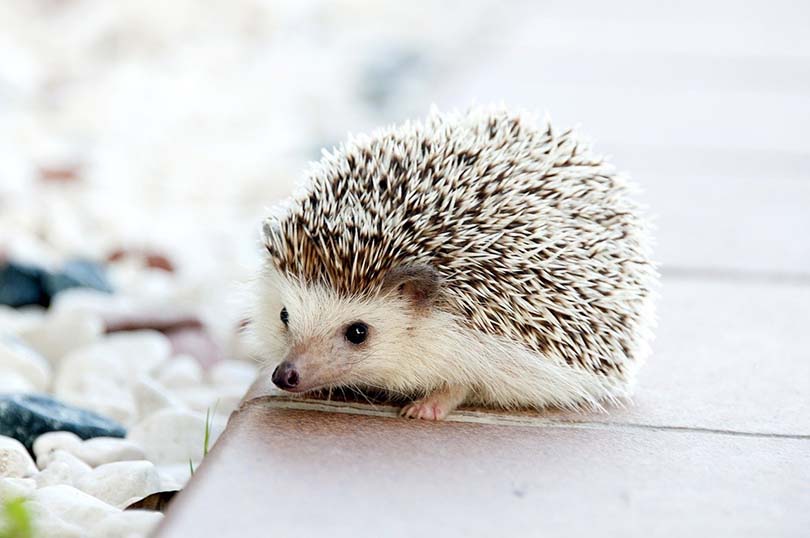

Factors Affecting the Size of Hedgehogs
Like humans, several variables affect the hedgehog’s size, and the most obvious one is sex. Female Afrtican Pygmy hedgehogs are larger than most males. Genetics is the most significant determining factor of size.
Aside from DNA, diet is a huge contributor. Without a healthy and well-balanced diet, a hedgehog will likely remain smaller as they develop.
The species is another important aspect to consider when thinking about the size of a hedgehog. The overall weight of a European hedgehog will be very different from an African Pygmy.
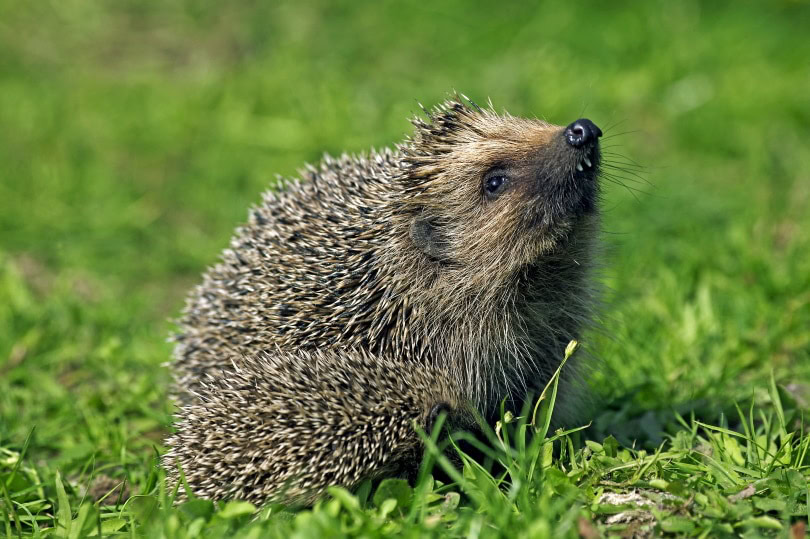
Ideal Diet for Maintaining a Healthy Weight
While the nutritional profile for a hedgehog is insectivorous, many people consider them omnivores because of the range of foods they eat. Their primary food sources come from invertebrates. Spiders, snails, caterpillars, millipedes, slugs, frogs, beetles, and other insects are all a part of their natural diet. However, they can also snack on a few fruits and veggies.
The diet of pet animals is a little different than wild ones. Pet hedgies should be given a high-protein diet with an approximation of around 30%–50% protein and 10%–20% fat. However, it’s best to consult an exotic veterinarian to formulate a meal plan curated specifically for your hedgehog.

How to Measure Your Hedgehog
Measuring your hedgehog as they age is a simple way to ensure they are developing at a normal rate and staying healthy. Don’t be intimidated by the quills on their back. Ensure your hog shows no signs of discomfort or nervousness before proceeding.
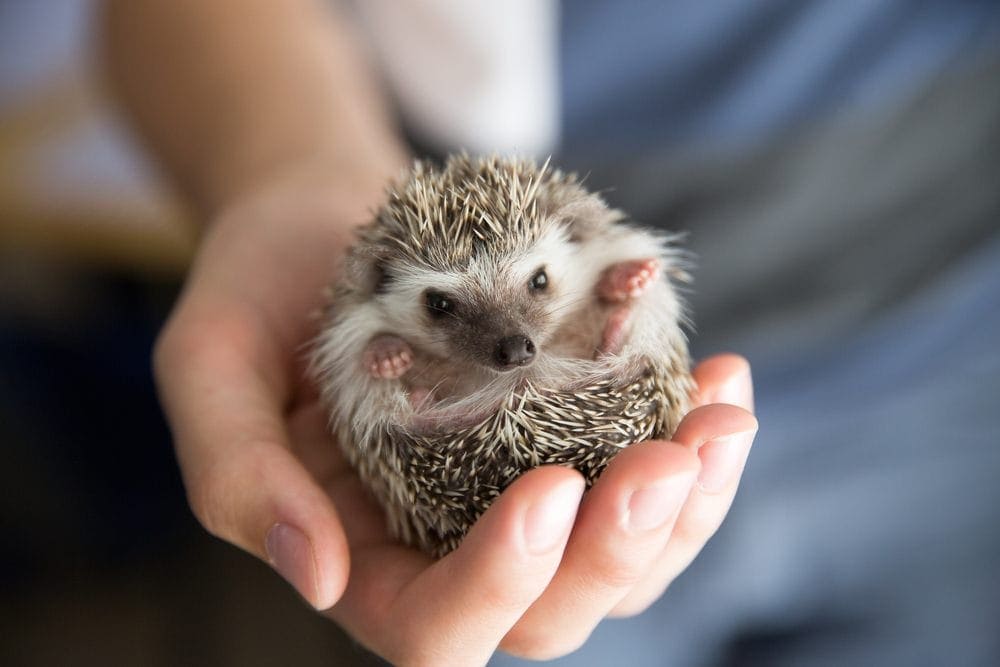
You should take three measurements during this process. The first measurement is taken around the middle of the hedgehog for the latitudinal circumference. Place a flexible measuring tape under your hog and gently wrap it around until you determine the circumference. Keep the tape secure under the hedgehog for the longitudinal circumference and wrap it all the way around the length of the body. For a general length, measure from the nose’s tip to the end of the tail.
The last measurement to ensure your hog is healthy is the weight. You can use a kitchen or bathroom scale to weigh your hedgehog.

Conclusion
Information on how large your hedgehog should be as they develop isn’t always readily available. It helps to know that as long as your baby hedgehog continues to show growth until they are possibly around 11 months of age, they are probably relatively healthy. However, one thing you want to be careful of is not to let them become obese. Overweight hedgehogs face several other health issues, reducing their overall quality of life.
Once your hedgie reaches their mature age, it isn’t hard to maintain their size. You can keep them active by providing plenty of room to move in their enclosures. You can also add an exercise wheel or other toys that will keep them active. Ensure that they eat a variety of gut-loaded insects and other healthy foods as well. Also, always keep a fresh water supply in their cage. Hedgehogs that are properly cared for will grow to a healthy size that is easy for any first-time pet owner to maintain.
Featured Image Credit: Coatesy, Shutterstock
